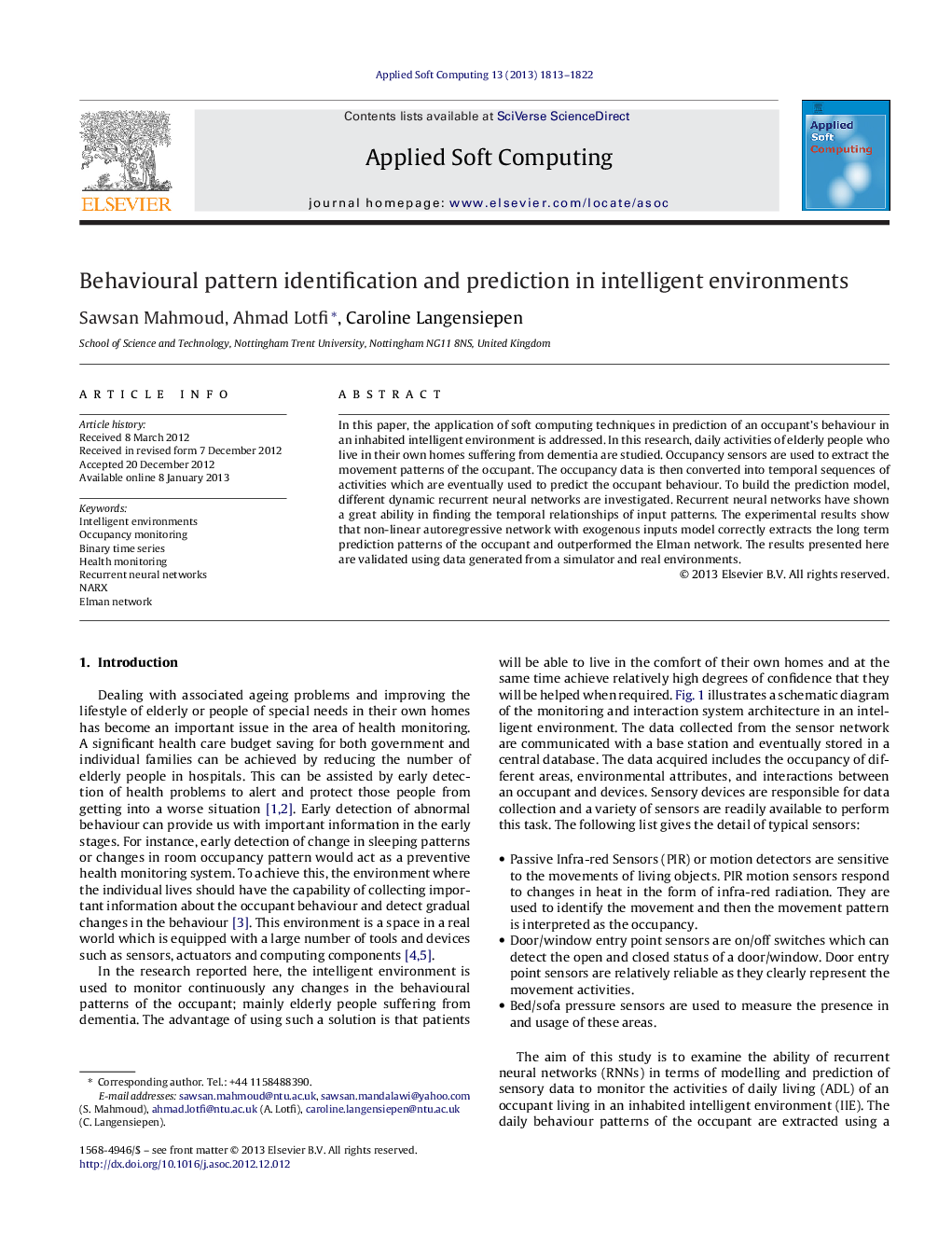| کد مقاله | کد نشریه | سال انتشار | مقاله انگلیسی | نسخه تمام متن |
|---|---|---|---|---|
| 496117 | 862850 | 2013 | 10 صفحه PDF | دانلود رایگان |

In this paper, the application of soft computing techniques in prediction of an occupant's behaviour in an inhabited intelligent environment is addressed. In this research, daily activities of elderly people who live in their own homes suffering from dementia are studied. Occupancy sensors are used to extract the movement patterns of the occupant. The occupancy data is then converted into temporal sequences of activities which are eventually used to predict the occupant behaviour. To build the prediction model, different dynamic recurrent neural networks are investigated. Recurrent neural networks have shown a great ability in finding the temporal relationships of input patterns. The experimental results show that non-linear autoregressive network with exogenous inputs model correctly extracts the long term prediction patterns of the occupant and outperformed the Elman network. The results presented here are validated using data generated from a simulator and real environments.
Figure optionsDownload as PowerPoint slideHighlights
► Model and predict the behaviour of an occupant in an intelligent environment.
► Analyse (represent and visualize) large binary data set generated from sensors.
► Long-term prediction patterns are extracted using NARX and the results are compared.
► The proposed method is implemented using both simulated and real data.
Journal: Applied Soft Computing - Volume 13, Issue 4, April 2013, Pages 1813–1822